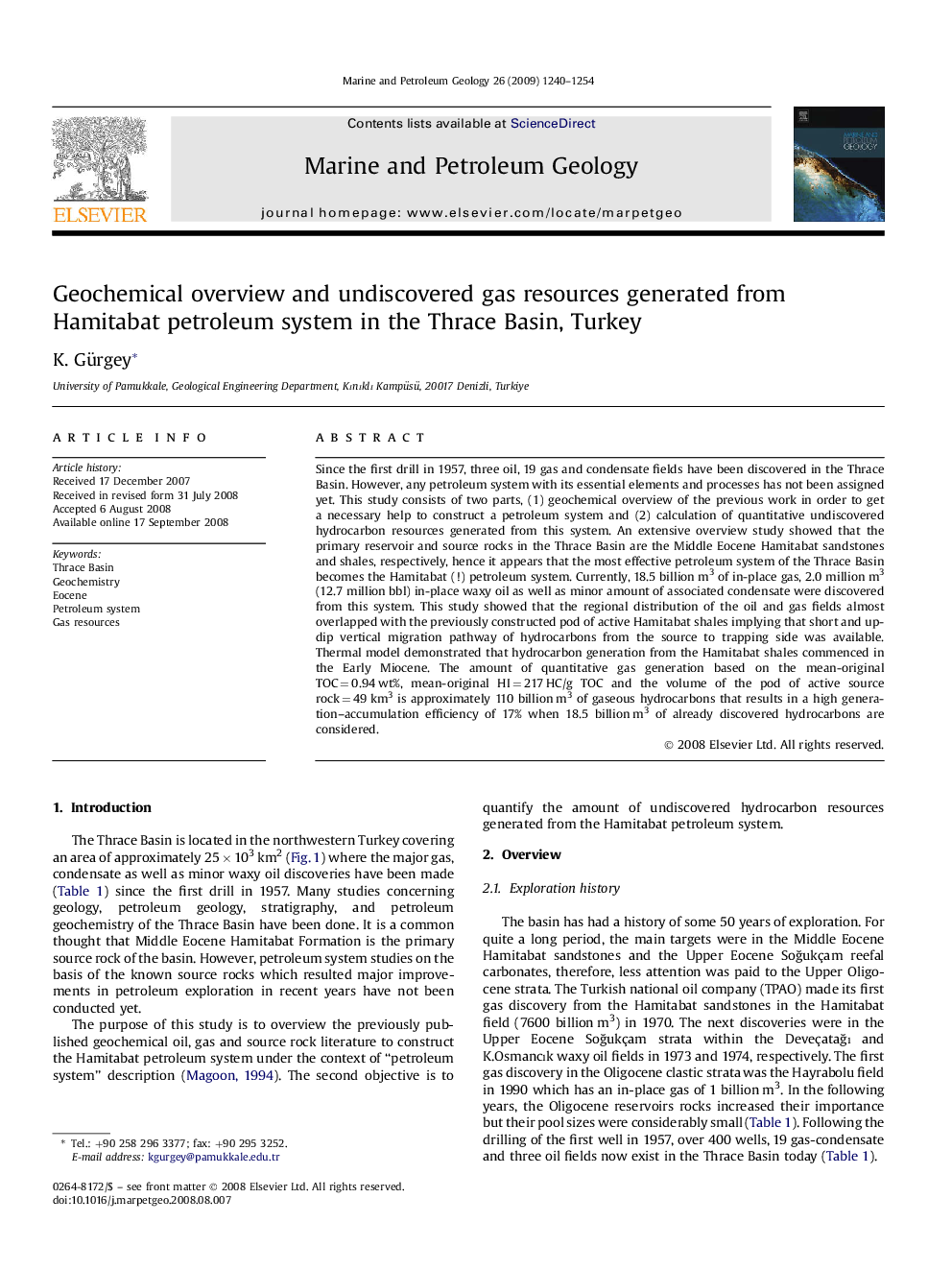| Article ID | Journal | Published Year | Pages | File Type |
|---|---|---|---|---|
| 4696292 | Marine and Petroleum Geology | 2009 | 15 Pages |
Since the first drill in 1957, three oil, 19 gas and condensate fields have been discovered in the Thrace Basin. However, any petroleum system with its essential elements and processes has not been assigned yet. This study consists of two parts, (1) geochemical overview of the previous work in order to get a necessary help to construct a petroleum system and (2) calculation of quantitative undiscovered hydrocarbon resources generated from this system. An extensive overview study showed that the primary reservoir and source rocks in the Thrace Basin are the Middle Eocene Hamitabat sandstones and shales, respectively, hence it appears that the most effective petroleum system of the Thrace Basin becomes the Hamitabat (!) petroleum system. Currently, 18.5 billion m3 of in-place gas, 2.0 million m3 (12.7 million bbl) in-place waxy oil as well as minor amount of associated condensate were discovered from this system. This study showed that the regional distribution of the oil and gas fields almost overlapped with the previously constructed pod of active Hamitabat shales implying that short and up-dip vertical migration pathway of hydrocarbons from the source to trapping side was available. Thermal model demonstrated that hydrocarbon generation from the Hamitabat shales commenced in the Early Miocene. The amount of quantitative gas generation based on the mean-original TOC = 0.94 wt%, mean-original HI = 217 HC/g TOC and the volume of the pod of active source rock = 49 km3 is approximately 110 billion m3 of gaseous hydrocarbons that results in a high generation–accumulation efficiency of 17% when 18.5 billion m3 of already discovered hydrocarbons are considered.
